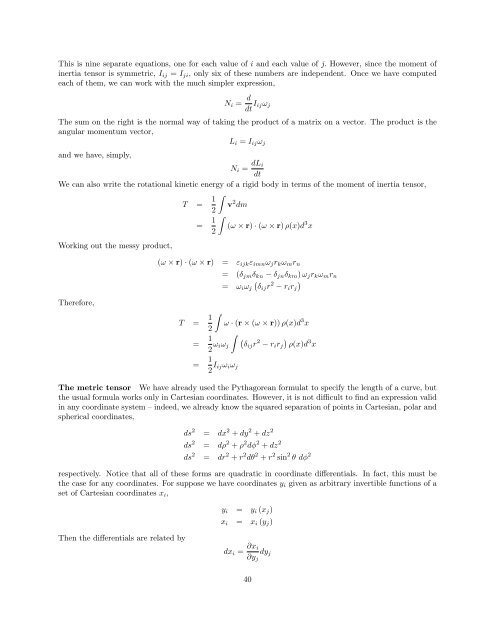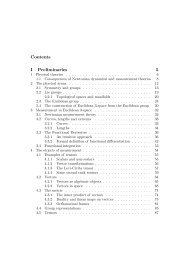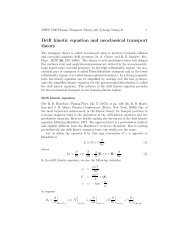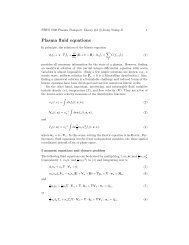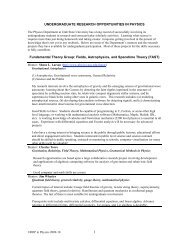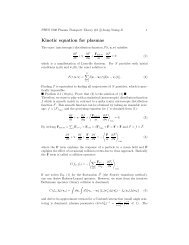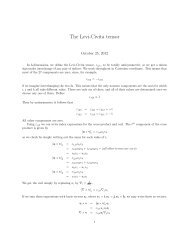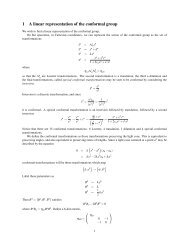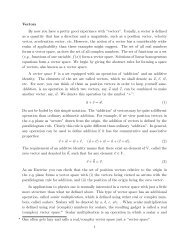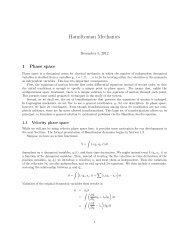Wheeler, Mechanics
Wheeler, Mechanics
Wheeler, Mechanics
Create successful ePaper yourself
Turn your PDF publications into a flip-book with our unique Google optimized e-Paper software.
This is nine separate equations, one for each value of i and each value of j. However, since the moment of<br />
inertia tensor is symmetric, I ij = I ji , only six of these numbers are independent. Once we have computed<br />
each of them, we can work with the much simpler expression,<br />
N i = d dt I ijω j<br />
The sum on the right is the normal way of taking the product of a matrix on a vector. The product is the<br />
angular momentum vector,<br />
L i = I ij ω j<br />
and we have, simply,<br />
N i = dL i<br />
dt<br />
We can also write the rotational kinetic energy of a rigid body in terms of the moment of inertia tensor,<br />
T = 1 ∫<br />
v 2 dm<br />
2<br />
= 1 ∫<br />
(ω × r) · (ω × r) ρ(x)d 3 x<br />
2<br />
Working out the messy product,<br />
(ω × r) · (ω × r) = ε ijk ε imn ω j r k ω m r n<br />
= (δ jm δ kn − δ jn δ km ) ω j r k ω m r n<br />
= ω i ω j<br />
(<br />
δij r 2 − r i r j<br />
)<br />
Therefore,<br />
T = 1 2<br />
∫<br />
ω · (r × (ω × r)) ρ(x)d 3 x<br />
= 1 2 ω iω j<br />
∫ (δij<br />
r 2 − r i r j<br />
)<br />
ρ(x)d 3 x<br />
= 1 2 I ijω i ω j<br />
The metric tensor We have already used the Pythagorean formulat to specify the length of a curve, but<br />
the usual formula works only in Cartesian coordinates. However, it is not difficult to find an expression valid<br />
in any coordinate system – indeed, we already know the squared separation of points in Cartesian, polar and<br />
spherical coordinates,<br />
ds 2 = dx 2 + dy 2 + dz 2<br />
ds 2 = dρ 2 + ρ 2 dφ 2 + dz 2<br />
ds 2 = dr 2 + r 2 dθ 2 + r 2 sin 2 θ dφ 2<br />
respectively. Notice that all of these forms are quadratic in coordinate differentials. In fact, this must be<br />
the case for any coordinates. For suppose we have coordinates y i given as arbitrary invertible functions of a<br />
set of Cartesian coordinates x i ,<br />
y i = y i (x j )<br />
x i = x i (y j )<br />
Then the differentials are related by<br />
dx i = ∂x i<br />
∂y j<br />
dy j<br />
40


